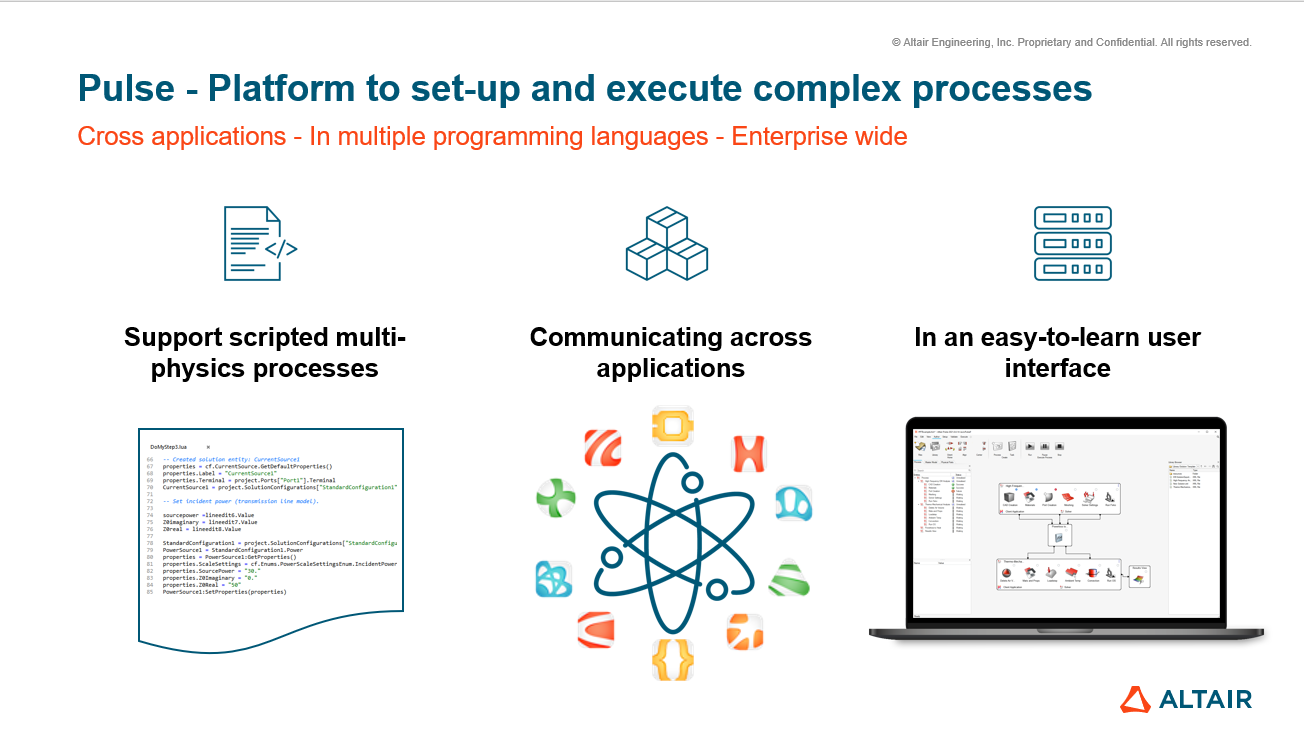Introduction
The right model, for the right decision, at the right time.
Overview
Pulse orchestrates meaningful models from the broad workflows required to simulate complex systems of systems to the focused workflows needed to enable fast, reliable, and repeatable modeling, analysis, and optimization. Across the entire product development lifecycle, Pulse accelerates decision-making and inspires greater confidence in the process.
- A digital thread that drives script consolidation, process communication, data traceability.
- Digitizing best practices to increase team efficiency and analysis consistency, while reducing procedural errors and non-value-added time. More effort can be invested in using simulation to inform performance targets, evaluate attribute trade-offs, and explore what-if scenarios.
- Boosting efficiency by using multiple scripting languages to eliminate repetitive tasks across applications, even for complex processes.
- Customization engineers to author low-code workflows and processes via a block diagram.
- Analysts to perform the complex multi-physics process without the necessity to be experts in various software packages.

Figure 1.
- Script-based automation:
- Pulse supports various script languages, such as Tcl, OML, Lua and Python.
- Scripts are encapsulated in blocks that can be graphically linked together in sequence.
- Blocks can be organized in a file-based library structure that is accessible within a Library Browser.
- Communication across Altair and non-Altair applications:
- Launch any applications and let the analyst complete workflow steps or control the user interface through Pulse eliminating the need for the analyst to learn various applications.
- Transfer data between applications.
- Block Diagram provides a user-friendly interface to build automations
quickly:
- Drag and drop blocks from the library into the diagram.
- Build the sequence in which the process is executed by linking blocks.
- Follow the progress of tasks execution during the simulation run through the status indication on each task.
- Whether a process can be customized depends on the API layer of the application itself.
- Whether the application launches including its user interface or runs in the background depends on the batch mode capability of the application.